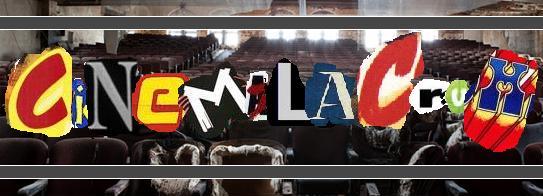I have decided in the past few weeks that since I am in graduate school and have become fairly certain of my intentions to continue on with my education in film studies that expanding my research interests to exist outside of the rather limiting window of South Korean cinema was of the necessity. While this has manifested itself in various formats, whether it be more work with archival footage and orphan media or an expansion to include previously unforeseen genre films, my secondary place of rest seems to have landed squarely within the frame of cyberpunk cinema, primarily because it is something that already has ties to contemporary South Korean films, but also because it manages to exist as an amalgam of some of my favorite elements from other works of genre, whether it be the cold, calculated, but ultimately indifferent way of the world that is clearly in line with the film noir of eras gone by, or the ability to transgress and readdress boundary issues by way of also possessing a decided heir of the science fiction film. Given the diversity at play within the cyberpunk film, I have even implemented weekly screenings of works within the broad genre as a means to expand my horizons. Of course, it is a somewhat expansive frame for a nondescript genre, so I manage to pull things like the short film Manhatta as a way to approach some of the more integral issues to the cyberpunk films, while also continuing to expand my understanding of urban spaces and social integrity. Manhatta, exists in this space because for all of its intentions to exist as a documentary, it is clearly far too invested in reflecting the mechanized labor at display that makes not only the film much more experimental in its composition, but also proves to be a rather evocative statement on the proletariat implications of an expanding cityscape, one that carries with it Babel like implications as the various bridges, towers and skyscrapers in the short films narrative burst through the sky unapologetically. Here the human figures neither exist comfortably in the real world, nor do they exist safely in a past or future space. Manhatta, while it may be an earnest look at a day in the life of a blue-collar worker in America, it also proves a forceful and poignant warning as to what can happen should humans becomes too invested in their machine, one of the major components of genre.
How then do the workings of dual filmmakers Charles Sheeler and Paul Strand evoke the idea that the mechanical and the human have somehow become inextricably intertwined in the modern setting. Well, considering that it is an experimental film from 1921 there is a heavy investment in methods of editing and juxtaposition that allow for a paralleling between the movement of the rows and clusters of people through New York with the various machinery of construction and destruction. The very human who desires to make the space of Manhatta(n) into something spectacular and grand, too fails to connect their own reliance on these beastial machines as a means to enact this expansion that is both outward and upward. Indeed, Manhatta takes on issues of hyper-technolization and, to a degree, industrialization much in the same way Fritz Lang's Metropolis would do the same, but where the latter is very much rooted in the workings of science-fiction, Manhatta still remains a documentary. In its emphasis on reality and the depictions of the city from a near-omniscient presence it seems more inclined to evoke an idea of the monotony and repetition of the cityscape and its various mechanized industries as being synonymous with the hustle and bustle of the daily commute. While it is far less violent, but no less surreal, one could make a comfortable comparison between Sheeler and Strand's work and that of Testuo, Iron Man wherein the metal and oil of the machine comes colliding together with the human to create some simple version of the cinematic cyborg, although in this short film one must accept it as a rather broad metaphor. What is far more clear in this short documentary are the concerns of the filmmakers. The film ends with a deeply rousing image of the sky cracking open to reveal large beams of light washing over the city, as though the very presence of God has bursted over the metropolis to look down on its own fusion in a 20th century Babel Revisited. The judgement or joy of the heavenly presence is left uncertain, a reality is only marked and the natural/spiritual is left merely to accept this existence. In Manhatta, man has matched the gods, the result is to this day still to be determined.
For more information on the filmmakers, or to watch Manhatta, click on either of the images below:






No comments:
Post a Comment